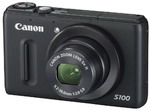Thursday, January 17, 2008
How to Build a Vista Media Center PC
Posted by Jeremy Charette in "Digital Home Hardware & Accessories" @ 12:00 PM
The motherboard zone is completely separated from the hard drive and power supply, and has a few tricks of its own up its sleeve. There are two huge 120mm fans on the right side of the case, which exhaust air away from the motherboard and associated components. Each fan has a three-way switch to adjust the speed from low to high. This ensures adequate airflow while allowing you to decide for yourself how much noise you are willing to put up with.

Figure 4: The quietest fan I've ever used, bar none: the Noctua NF-S12-800.
While the included Tri-Cool fans are relatively quiet, they still made a bit too much noise for my taste, so I replaced them with two Noctua NF-S12-800 fans. They have a unique fan blade design created by the “Austrian Institute for Heat-Transmission and Fan Technology” which purports to generate greater airflow with less noise than competing “quiet” fans. These fans include silicone grommets to mount the fans with, which reduce the transmission of vibrations into the computer case. They also come with an Ultra Low Noise Adapter or ULNA. This consists of a wiring harness that includes a diode to reduce fan voltage, and therefore, fan speed.
These fans can be summed up in one statement: I couldn’t hear them. At all. Even in near total silence (every device in the house turned off), I couldn’t tell when they were on and when they were off. It was obvious that these two large fans weren’t going to add any noise to my living room.
Air is drawn in from a small vent at the rear of the case, and also from the aforementioned vents in the bottom of the hard drive bay. There is an adjustable baffle that extends from the rear of the case up against the CPU heat sink, ensuring that fresh air from the rear vent flows through the heat sink before being sucked out of the case by the side fans.
There are adjustable cable ties around the case to keep everything neat and tidy. A foam strip sits between the divider between the power supply zone and the rest of the case, so that any vibrations from the various fans and the hard drive aren't transmitted to the case cover. The DVD drive sits in a frame which isn’t hard-mounted to the case, and has a couple of rubber bumpers to keep vibrations to a minimum. All of these various tricks work in concert to ensure that the system as a whole produces as small of a noise footprint as possible.

Figure 5: Two cores running at 2.0 Ghz. More power!
I wanted to go with a CPU which would produce only moderate amounts of heat, but also have enough power to keep up with dual HD streams, as well as have zippy performance while encoding video files. That said, I didn't want to break the bank. In the end I settled on AMD's Athlon 64 X2 3600+ processor. It only consumes 65 watts of power at its maximum, but with dual cores running at 2.0 Ghz, it's able to easily satisfy all of my demands. Even more incredible is that street prices for this CPU have dropped to under $50.
Now, how to cool that fast CPU? The Antec Fusion case presents a unique challenge: height. Or lack thereof. A typical heat pipe cooler won't fit in the case, so a low-profile unit is required. I chose Thermaltake's Ruby Orb, a large air-cooled unit with 140 radial fins. It has a large, quiet 120mm fan in the center, which runs at a claimed 17 dBa. There's no way I can measure anything that quiet, but in "real world" testing, I can definitely say it's quiet. So quiet that from 3 feet away I couldn't tell when it was on or off.

Figure 6: It all squeezes in there, but as you can see, it's a tight fit!
My only issue was that the fins overhung the RAM sticks right next to them. In order to get RAM in or out of the motherboard, you have to remove the CPU cooler. Speaking of RAM, I installed two 2GB sticks of Kingston 800 Mhz Hyper-X DDR2 RAM. With the built-in blue anodized heat spreaders, overheating is a non-issue, and at 800 Mhz they can easily keep up with that dual-core Athlon 64 X2 processor.

Figure 7: 4GB of Kingston RAM. Shame no one will ever see those snazzy blue anodized heat spreaders!












